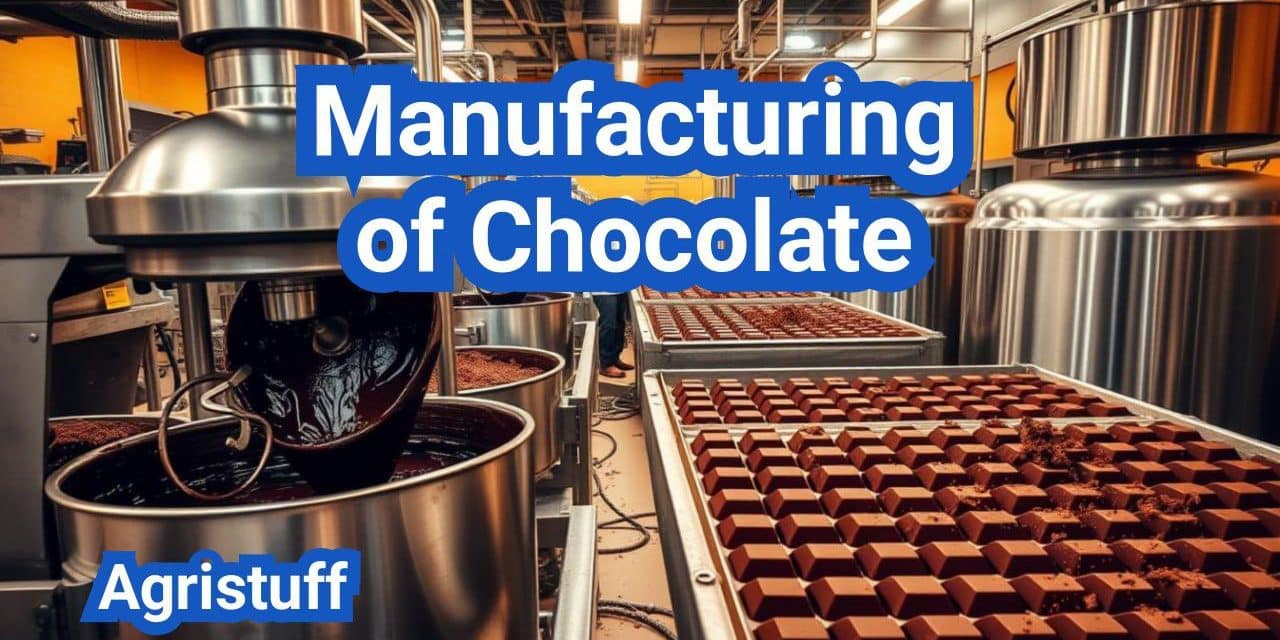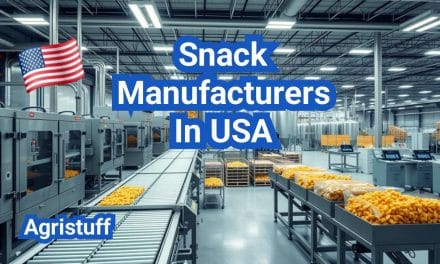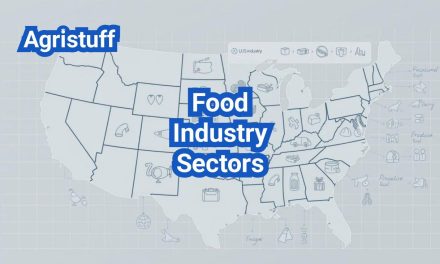The journey to creating delicious chocolate bars ( Manufacturing of Chocolate ) begins with high-quality cocoa beans. The process involves several critical steps, starting from fermentation and drying of the beans to roasting, grinding, and finally, conching.
The quality of the cocoa beans is paramount as it directly affects the flavor and aroma of the final product. The chocolate production process is intricate, requiring precise control over each stage to produce a superior quality chocolate.
Key Takeaways
- The quality of cocoa beans is crucial for the flavor and aroma of the chocolate.
- The chocolate production process involves fermentation, drying, roasting, grinding, and conching.
- Precision is key in controlling each stage of chocolate manufacturing.
- Cocoa bean fermentation and drying are critical initial steps.
- The final chocolate product is a result of a complex process involving multiple stages.
The World of Chocolate Manufacturing
From bean to bar, the chocolate manufacturing process is a fascinating journey that combines traditional techniques with modern technology. The chocolate industry is a significant player in the global confectionery market, with the U.S. being one of the largest consumers.
Global Chocolate Industry Overview
The global chocolate industry is a vast and complex network, valued at over $130 billion. Asia and Europe are significant players, with companies like Mars, Hershey’s, and Nestle dominating the market. The industry is characterized by a mix of large multinational corporations and smaller, artisanal producers.
According to industry reports, the global chocolate market is expected to grow at a CAGR of 4.5% over the next five years, driven by increasing demand for premium and sustainable chocolate products.
U.S. Chocolate Production Landscape
The U.S. chocolate production landscape is diverse, with a mix of large manufacturers and small, craft producers. Major companies like Hershey’s and Mars have significant operations in the U.S., while smaller producers focus on creating unique, high-quality products.
The U.S. chocolate industry is driven by consumer demand for a wide range of products, from milk chocolate bars to artisanal dark chocolate. Consumers are increasingly seeking out premium and sustainable chocolate options, driving growth in this segment.
From Bean to Bar: Process Overview | Manufacturing of Chocolate
The process of transforming cocoa beans into chocolate bars involves several key steps: cleaning and roasting the beans, grinding them into chocolate liquor, and then conching and tempering the chocolate. This complex process requires precision and quality control to produce high-quality chocolate.
“The art of chocolate making is a delicate balance between science and craftsmanship,” says a leading chocolatier. “It requires a deep understanding of the cocoa bean and the processes involved in transforming it into a delicious treat.”
The bean to bar process is a fascinating journey that involves a combination of traditional techniques and modern technology. By understanding the intricacies of this process, manufacturers can create unique and delicious chocolate products that meet consumer demands.
Cocoa Bean Cultivation and Sourcing

Understanding the origins of chocolate starts with exploring the cultivation of Theobroma Cacao, the tree that produces the precious cocoa beans. The quality and flavor profile of chocolate are deeply rooted in the agricultural practices involved in cultivating these beans.
Theobroma Cacao: Understanding the Source
Theobroma Cacao, meaning “food of the gods,” is a tropical tree native to the Amazon region. It requires a specific climate with high humidity and shade to thrive. The cultivation of Theobroma Cacao is a delicate process that involves careful pruning, fertilization, and pest management.
“Cacao is a delicate crop that requires precise conditions to grow. The flavor and quality of the beans are directly influenced by the care taken during cultivation.”
Major Cocoa Growing Regions and Varieties
Cocoa beans are cultivated in various tropical regions around the world, with West Africa, South America, and Southeast Asia being major production areas. Different regions produce distinct varieties of cocoa, such as Forastero, Criollo, and Trinitario, each with its unique flavor profile.
| Region | Main Variety | Flavor Profile |
|---|---|---|
| West Africa | Forastero | Robust, earthy |
| South America | Criollo | Delicate, fruity |
| Southeast Asia | Trinitario | Balanced, complex |
Bean Selection Criteria for U.S. Manufacturers | Manufacturing of Chocolate
U.S. chocolate manufacturers are highly selective when it comes to sourcing cocoa beans. They look for beans that have been properly fermented and dried to develop the desired flavor precursors. The selection criteria often include factors such as bean size, moisture content, and the presence of defects.
The quality of cocoa beans is crucial for producing high-quality chocolate. By understanding the cultivation process and the different varieties available, manufacturers can make informed decisions about their sourcing.
Post-Harvest Processing of Cocoa Beans
After cocoa beans are harvested, they undergo a series of critical processes that significantly impact their quality and flavor profile. The post-harvest processing is crucial for developing the characteristic flavor and aroma of chocolate.
Fermentation: Developing Chocolate Flavor Precursors
Fermentation is a biochemical process that breaks down the complex compounds in cocoa beans, developing the precursors to chocolate flavor. This process typically lasts between 2 to 10 days, depending on the variety and desired flavor profile.
During fermentation, the natural yeast and bacteria present on the beans start to break down the sugars, producing lactic acid and other compounds that contribute to the flavor. Proper fermentation is critical as it directly affects the quality of the final chocolate product.
Drying Methods and Quality Impact | Manufacturing of Chocolate
After fermentation, the beans are dried to reduce the moisture content, which is essential for preserving the beans during storage and transportation. There are various drying methods, including sun drying and mechanical drying.
- Sun drying is a traditional method that relies on natural sunlight to dry the beans. This method can impart a unique flavor but is weather-dependent.
- Mechanical drying uses machines to control the temperature and humidity, providing a more consistent drying process.
The choice of drying method significantly impacts the quality of the cocoa beans, with improper drying potentially leading to mold or off-flavors.
Sorting, Grading, and Export Standards | Manufacturing of Chocolate
Once dried, the cocoa beans are sorted and graded according to size and quality. This step is crucial for ensuring that only high-quality beans are used for chocolate production.
- Sorting involves separating the beans by size to ensure uniformity.
- Grading assesses the quality of the beans, taking into account factors such as moisture content and the presence of defects.
Cocoa beans must meet specific export standards, including those related to cleanliness, moisture content, and freedom from contaminants. Compliance with these standards is essential for accessing international markets.
Bean-to-Factory Journey: Supply Chain Logistics

The journey of cocoa beans from tropical farms to U.S. chocolate factories involves complex global supply chain logistics. This intricate process ensures that high-quality cocoa beans reach manufacturers, who then transform them into the chocolate products consumers enjoy.
Global Transportation Networks | Manufacturing of Chocolate
Cocoa beans are typically transported from farms in tropical regions to U.S. factories through a combination of land, sea, and air transportation networks. The beans are first consolidated at local storage facilities near the farms, then shipped to ports for export. Major shipping routes often involve container ships traveling from West African or Southeast Asian ports to U.S. ports like New York/Newark or Los Angeles/Long Beach.
The transportation process requires careful handling to maintain the quality of the cocoa beans. Shipping companies use specialized containers that regulate temperature and humidity to prevent spoilage. For instance, some shipping lines utilize ventilation systems to maintain airflow and prevent moisture buildup, which can lead to mold or fermentation issues during transit.
U.S. Import Procedures and Inspections | Manufacturing of Chocolate
Upon arrival in the United States, cocoa bean shipments undergo rigorous import procedures and inspections. U.S. Customs and Border Protection (CBP) officials inspect shipments to ensure compliance with customs regulations, while the Food and Drug Administration (FDA) checks for adherence to food safety standards.
Importers must provide detailed documentation, including certificates of origin, phytosanitary certificates, and quality control reports. Shipments may be subject to sampling and testing for contaminants such as aflatoxins or heavy metals. Compliance with the Food Safety Modernization Act (FSMA) is also mandatory, requiring importers to implement preventive controls and maintain records of their supply chain activities.
Optimal Storage Conditions in American Facilities | Manufacturing of Chocolate
Once cleared through customs, cocoa beans are stored in facilities that maintain optimal storage conditions. These warehouses are designed to keep the beans dry and at a consistent temperature, typically between 60°F to 70°F (15°C to 21°C), to prevent degradation.
Storage facilities often employ climate control systems and pest management programs to protect the beans from moisture, insects, and rodents. Proper stacking and rotation practices are also crucial to ensure that older beans are used before they deteriorate. Some facilities may also use fumigation or other treatments to control pests and prevent infestation.
Initial Factory Processing Steps
As cocoa beans enter the factory, they are subjected to a meticulous cleaning, roasting, and winnowing process that enhances their natural flavors. This initial stage is crucial in determining the quality and flavor profile of the final chocolate product.
Cleaning and Foreign Material Removal Systems | Manufacturing of Chocolate
The first step in factory processing is cleaning the cocoa beans to remove any foreign material. This is achieved through sophisticated cleaning systems that use air jets, magnets, and sieves to separate impurities from the beans. Efficient cleaning is essential to prevent contamination and ensure the quality of the chocolate.
These cleaning systems are designed to handle large volumes of cocoa beans and can be adjusted to accommodate different bean sizes and types. By removing stones, sticks, and other debris, manufacturers can prevent damage to equipment and ensure a consistent raw material.
Roasting: Temperature Profiles and Flavor Development
Roasting is a critical step that develops the flavor of the cocoa beans. The roasting process involves heating the beans to high temperatures to bring out their unique flavor characteristics. Temperature profiles are carefully controlled to achieve the desired flavor notes, ranging from fruity to nutty.
Different manufacturers may have their own proprietary roasting techniques, but the goal is always to enhance the natural flavors of the cocoa. Roasting can be done in batches or continuously, depending on the factory’s equipment and production volume.
Cracking and Winnowing Operations | Manufacturing of Chocolate
After roasting, the cocoa beans are cracked to separate the shells from the nibs. This process is followed by winnowing, which removes the shells, leaving behind the cocoa nibs. Winnowing is a crucial step as it directly affects the quality of the chocolate liquor produced in later stages.
Modern winnowing machines use air classification to efficiently separate the shells from the nibs. The resulting cocoa nibs are then ready for grinding into chocolate liquor, the base ingredient for making chocolate.
The Manufacturing of Chocolate: Core Processes

At the heart of chocolate manufacturing lie three critical processes: grinding, pressing, and mixing, which together enable the creation of various chocolate types. These core processes are fundamental to transforming cocoa beans into the wide range of chocolate products enjoyed by consumers.
Grinding Cocoa Nibs into Chocolate Liquor
The first step in the core processes is grinding cocoa nibs into chocolate liquor. This process involves using a grinder or melanger to break down the nibs into a fine, smooth liquid. The resulting chocolate liquor is a crucial ingredient in chocolate production, serving as the base for both dark and milk chocolate.
The grinding process is essential for developing the flavor and texture of the chocolate. A finer grind can lead to a smoother chocolate, while a coarser grind may result in a more textured product.
Pressing: Separating Cocoa Butter and Cocoa Powder
After grinding, the next core process is pressing the chocolate liquor to separate it into two main components: cocoa butter and cocoa powder. This is achieved using a hydraulic press, which applies significant pressure to the liquor, causing the cocoa butter to separate from the cocoa solids.
- The cocoa butter is used to give chocolate its melt-in-your-mouth texture and is often added back into the chocolate during the mixing process.
- The cocoa powder, on the other hand, is used in baking, cooking, and making beverages.
Mixing: Formulating Different Chocolate Types
The final core process is mixing, where the chocolate liquor, cocoa butter, sugar, and sometimes milk are blended together in specific proportions to create different types of chocolate. The mixing process can involve various techniques, including conching, to develop the flavor and texture of the chocolate.
- For dark chocolate, the mixing process focuses on blending cocoa liquor, sugar, and sometimes cocoa butter.
- For milk chocolate, milk powder or condensed milk is added to the mixture, requiring adjustments in the proportions of the other ingredients.
These core processes – grinding, pressing, and mixing – are crucial for producing high-quality chocolate products. By understanding and controlling these processes, chocolate manufacturers can create a wide range of products that cater to different tastes and preferences.
Refining and Particle Size Reduction
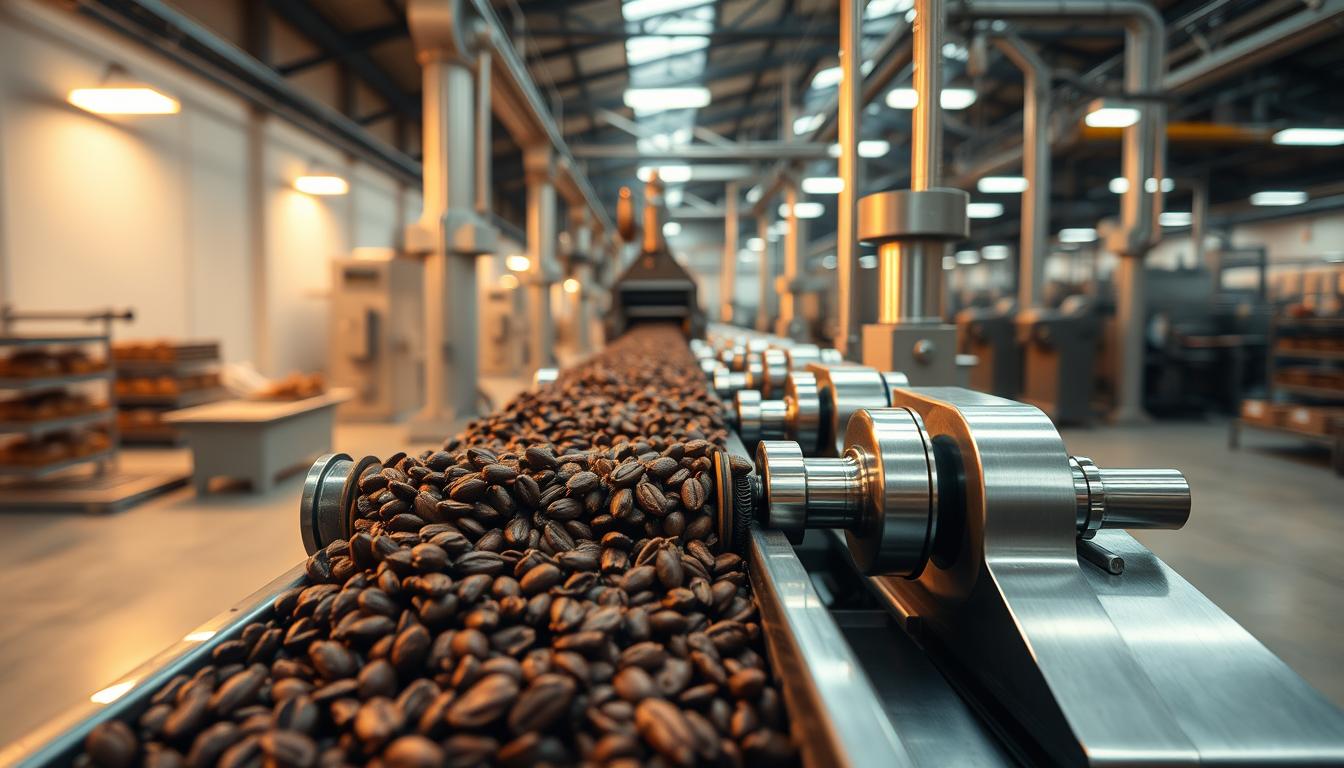
To produce high-quality chocolate, manufacturers must carefully control the refining process. Refining is a critical step that involves reducing the particle size of the chocolate to achieve a smooth texture. This process is essential for creating premium chocolate products that meet consumer expectations.
Roll Refiner Technology and Operation | Manufacturing of Chocolate
Roll refiners are a key piece of equipment in the chocolate refining process. These machines use a series of rollers to grind the chocolate, reducing the particle size and improving the texture. The operation of roll refiners involves adjusting the gap between the rollers to achieve the desired particle size. This process requires precise control to ensure consistency in the final product.
The roll refiner technology is designed to handle the abrasive nature of chocolate, which can be challenging for equipment. Manufacturers often use specialized materials and designs to withstand the wear and tear associated with refining chocolate.
Particle Size Specifications for Premium Chocolate
Premium chocolate products are characterized by their smooth texture, which is directly related to the particle size of the chocolate. The particle size specification for premium chocolate typically ranges between 20-30 microns. Achieving this level of fineness requires careful control of the refining process.
Particle size affects not only the texture but also the flavor and mouthfeel of the chocolate. Smaller particles contribute to a more even distribution of flavors, enhancing the overall chocolate experience.
Quality Testing During Refining | Manufacturing of Chocolate
Quality testing is an integral part of the refining process. Manufacturers use various methods to assess the particle size and distribution of the chocolate. Techniques such as laser diffraction and microscopy are commonly employed to measure particle size accurately.
Regular quality testing during refining ensures that the chocolate meets the required specifications. This ongoing monitoring allows manufacturers to make adjustments as needed, maintaining consistency in the final product.
Conching: The Art of Flavor Development

The art of conching lies at the heart of chocolate production, transforming raw cocoa into a rich, complex flavor experience. Conching is a critical step that develops the flavor and texture of chocolate, making it a crucial element in the manufacturing process.
Conching Equipment Types | Manufacturing of Chocolate
Conching equipment comes in various forms, with the primary distinction being between horizontal and vertical conches. Horizontal conches are widely used in large-scale production due to their efficiency and ability to handle large batches. They offer a high degree of control over the conching process, allowing for precise adjustments in temperature and agitation. On the other hand, vertical conches are often preferred for smaller batches and artisanal productions, offering a more traditional approach to conching.
Time and Temperature Variables | Manufacturing of Chocolate
The conching process is highly sensitive to time and temperature variables. The duration of conching can range from a few hours to several days, depending on the type of chocolate being produced and the desired flavor profile. Temperature control is equally critical, as it affects the development of the chocolate’s flavor and aroma. Optimal temperature ranges vary, but generally, conching occurs between 40°C to 80°C. The interplay between time and temperature ultimately determines the final character of the chocolate.
Chemical and Physical Changes | Manufacturing of Chocolate
During conching, several chemical and physical changes occur that are fundamental to the development of chocolate’s flavor and texture. The process involves the oxidation of certain compounds, the formation of new flavor precursors, and the reduction of undesirable flavor components. Chemical reactions during conching contribute to the development of the chocolate’s aroma, while physical changes, such as the reduction of particle size and the emulsification of cocoa butter, improve the chocolate’s texture and mouthfeel.
Understanding these changes is crucial for chocolate manufacturers to optimize their conching processes and produce high-quality chocolate products.
Tempering: Chocolate Crystallization Science

The art of tempering chocolate lies in understanding the science behind cocoa butter crystallization. Tempering is a critical process that gives chocolate its glossy appearance and snappy texture, making it a crucial step in chocolate manufacturing.
Crystal Structures in Cocoa Butter
Cocoa butter, a primary component of chocolate, can crystallize into six different crystal forms, known as polymorphs. The most stable form, known as beta crystals, provides chocolate with its desired characteristics. Understanding these crystal structures is essential for achieving proper temper.
The process involves heating and cooling the chocolate to encourage the formation of these stable beta crystals. If the chocolate is not tempered correctly, it may appear dull or develop a bloom, where the fat migrates to the surface.
Industrial Tempering Methods and Equipment | Manufacturing of Chocolate
Industrial chocolate manufacturers use various tempering machines and techniques to achieve consistent results. These machines can heat and cool chocolate to precise temperatures, controlling the crystallization process.
Some common tempering methods include:
- Seeding: Adding already tempered chocolate to melted chocolate to encourage the formation of the correct crystal structure.
- Tabling: Pouring melted chocolate onto a cool surface to rapidly cool and form the desired crystals.
- Machine tempering: Using specialized equipment to heat and cool the chocolate to the precise temperatures required.
Quality Testing for Proper Temper | Manufacturing of Chocolate
Ensuring that chocolate is properly tempered involves several quality control measures. One common method is the snap test, where a piece of chocolate is broken to check for a clean snap, indicative of well-tempered chocolate.
Other tests include checking the chocolate’s surface for gloss and examining its texture. Manufacturers may also use specialized equipment to measure the chocolate’s tempering status.
By mastering the tempering process, chocolate manufacturers can produce high-quality chocolate products that are both visually appealing and have a satisfying texture.
Molding and Forming Chocolate Products

Once chocolate is tempered, it’s ready for molding, the process that gives chocolate its final shape and form. Molding is a critical step in chocolate manufacturing, as it transforms the tempered chocolate into the desired products that consumers enjoy.
Bar Molding Technologies and Equipment | Manufacturing of Chocolate
Bar molding is one of the most common methods used in chocolate production. It involves pouring tempered chocolate into molds, which are then vibrated to remove air bubbles and ensure the chocolate fills the mold completely. Modern bar molding technologies include automated molding lines that can produce a high volume of chocolate bars with precision and consistency.
The equipment used for bar molding varies from simple, manual molds to complex, automated systems. Automated molding machines can control temperature, vibration, and deposition rate, ensuring high-quality chocolate bars. These machines are particularly useful for large-scale production, where efficiency and consistency are crucial.
Enrobing and Coating Processes | Manufacturing of Chocolate
Enrobing is another significant process in chocolate manufacturing, where a center product (such as nuts, caramel, or fruit) is coated with chocolate. The enrobing process involves passing the center through a chocolate curtain or using a wire mesh conveyor to ensure complete coverage. Enrobing machines are designed to coat products evenly and efficiently, allowing for a wide range of center types and sizes.
The quality of the enrobing process depends on factors like chocolate viscosity, temperature, and the speed of the conveyor belt. Proper enrobing results in a smooth, even coating that enhances the product’s appearance and flavor.
Cooling Tunnels and Setting Parameters | Manufacturing of Chocolate
After molding or enrobing, chocolate products need to be cooled to set the chocolate. Cooling tunnels are used to control the cooling process, ensuring that the chocolate sets properly without developing bloom or other defects. The temperature and humidity within the cooling tunnel are critical parameters that must be controlled to achieve the desired outcome.
Cooling tunnel parameters such as temperature (typically between 12°C to 15°C), humidity, and dwell time are adjusted based on the type of chocolate and the product being made. Proper cooling ensures that the chocolate has a good snap when broken and a glossy appearance.
Manufacturing Process of Dark Chocolate

Manufacturing dark chocolate is a nuanced process that demands attention to detail in both ingredients and production methods. Dark chocolate, known for its rich flavor and high cocoa content, requires specific ingredient ratios and processing techniques to achieve its distinctive taste and texture.
Ingredient Specifications for Dark Chocolate
Dark chocolate is characterized by its high cocoa content, typically ranging from 30% to 99%. The ingredient specifications for dark chocolate include:
- Cocoa liquor or cocoa nibs
- Sugar
- Cocoa butter (optional)
- Vanillin or other flavorings (optional)
The quality of the cocoa beans used is crucial, as it directly impacts the flavor profile of the final product. Dark chocolate manufacturers often source high-quality cocoa beans from specific regions known for their distinct flavor profiles.
Process Modifications for Higher Cocoa Content
Producing dark chocolate with higher cocoa content requires adjustments in the manufacturing process. These modifications include:
| Cocoa Content | Process Modifications |
|---|---|
| 70% and above | Increased conching time to develop complex flavors |
| 85% and above | Adjustments in sugar content and potential addition of cocoa butter |
These process modifications are critical to achieving the desired flavor profile and texture in high-cocoa-content dark chocolate.
Quality Control Specific to Dark Chocolate
Quality control measures for dark chocolate manufacturing focus on ensuring the product meets the required standards for taste, texture, and appearance. Key quality control aspects include:
- Regular tasting panels to assess flavor profile
- Texture analysis to ensure smooth mouthfeel
- Visual inspection for appearance and packaging quality
By implementing these quality control measures, dark chocolate manufacturers can ensure their products meet consumer expectations and maintain a high level of quality.
Manufacturing of Dairy Milk Chocolate
Milk chocolate production is distinct from dark chocolate due to the incorporation of dairy ingredients. The process involves several critical steps that ensure the final product meets consumer expectations for taste, texture, and quality.
Milk Component Integration Methods
The integration of milk components into chocolate is a crucial step in milk chocolate production. Manufacturers use various methods to incorporate milk powder or condensed milk into the chocolate mixture. Milk powder integration is commonly achieved through a dry mixing process with cocoa nibs or other ingredients before grinding.
- Conched milk chocolate production involves adding milk fat and milk solids during the conching phase.
- Some manufacturers use milk crumb – a process where milk is mixed with sugar and cocoa liquor, then dried and ground.
Process Adaptations for Milk Chocolate
Producing milk chocolate requires adaptations to the standard chocolate manufacturing process. One key adaptation is the adjustment of the conching time and temperature. Milk chocolate typically requires a shorter conching time compared to dark chocolate to preserve the delicate milk flavors.
- The refining process may also be adjusted to accommodate the presence of milk solids.
- Tempering and molding processes remain similar to those for dark chocolate but may require fine-tuning based on the milk fat content.
Flavor Profile Development Techniques
Developing the desired flavor profile in milk chocolate involves a combination of ingredient selection, processing techniques, and quality control measures. Manufacturers may use different types of milk (whole, skim, or a combination) to achieve the desired flavor and texture.
“The art of creating a great milk chocolate lies in balancing the sweetness, milkiness, and cocoa flavors.” – Chocolate Industry Expert
Flavor profile development also involves controlling the Maillard reaction during processing, which contributes to the characteristic flavors of milk chocolate.
Chocolate Manufacturing Equipment
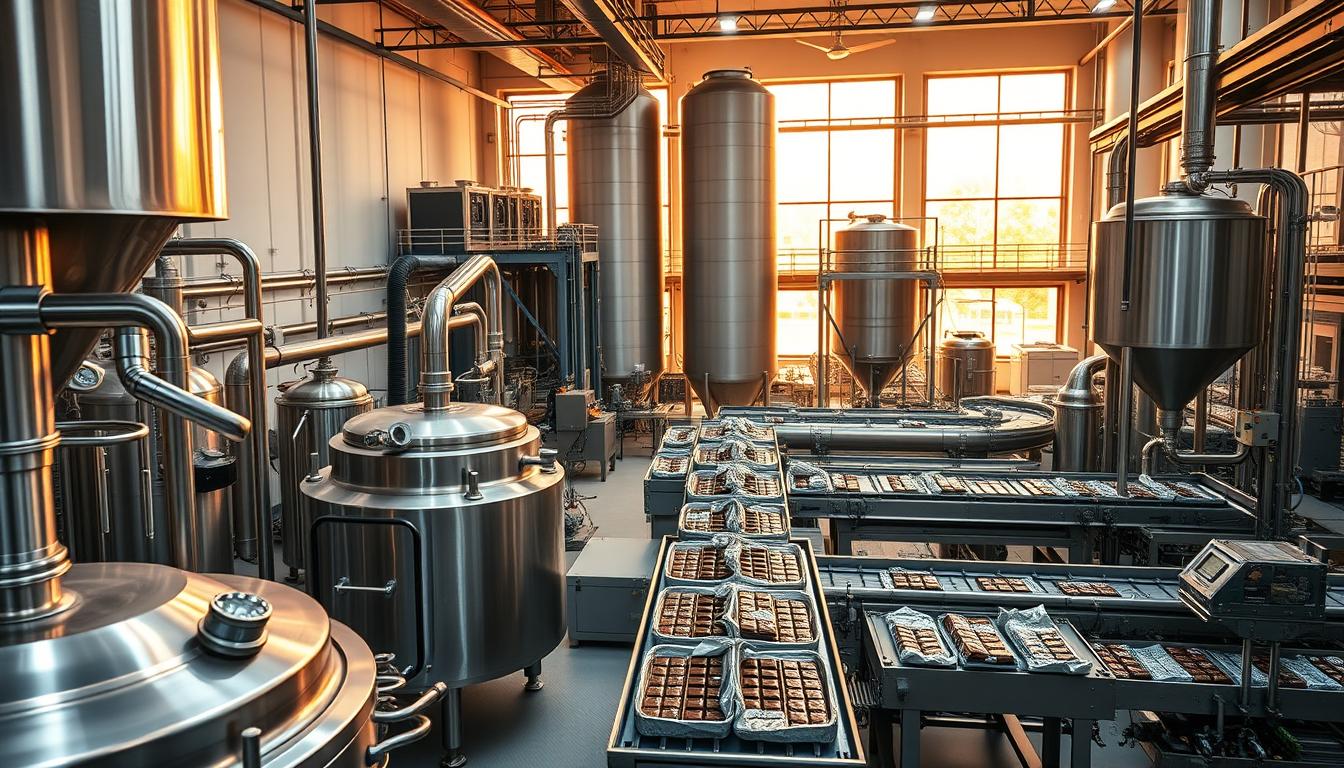
Modern chocolate production involves a range of machinery and automation systems to ensure efficiency and consistency. The chocolate manufacturing process is complex, requiring various types of equipment to transform raw cocoa beans into high-quality chocolate products.
Essential Machinery for Modern Production
The production of chocolate involves several key stages, each requiring specialized machinery. Cleaning and sorting machines are used to remove impurities and ensure uniformity of the cocoa beans. Roasters are crucial for developing the flavor profile of the chocolate.
Other essential equipment includes grinders and mills that reduce the cocoa beans into fine chocolate liquor, and conching machines that mix and aerate the chocolate to develop its flavor and texture.
Automation and Control Systems
Automation plays a vital role in modern chocolate manufacturing, enhancing efficiency and reducing labor costs. Automated control systems monitor and adjust the production process in real-time, ensuring consistent quality and minimizing waste.
These systems can include temperature control, flow meters, and sensors that detect even slight variations in the production process. By leveraging automation, chocolate manufacturers can achieve higher productivity and better product consistency.
“The integration of automation in chocolate manufacturing has revolutionized the industry, enabling producers to meet growing demand while maintaining high-quality standards.”
Maintenance and Sanitation Requirements
To ensure the production of safe and high-quality chocolate, regular maintenance and sanitation of equipment are crucial. Preventive maintenance schedules help avoid equipment failures and reduce downtime.
Sanitation practices, including cleaning-in-place (CIP) systems, are essential for preventing contamination and ensuring compliance with food safety regulations. By prioritizing maintenance and sanitation, chocolate manufacturers can protect their brand reputation and maintain consumer trust.
Packaging and Distribution Systems
Packaging and distribution play a pivotal role in the chocolate supply chain, ensuring products remain fresh and appealing. As chocolate products leave the manufacturing facility, the focus shifts to preserving their quality and extending their shelf life.
Primary Packaging Technologies
Primary packaging is the first line of defense against environmental factors that can affect chocolate quality. Modern chocolate manufacturers utilize various packaging materials and technologies, including:
- Flexible packaging: pouches and wrappers that provide a barrier against moisture and light.
- Rigid packaging: plastic or metal containers that offer additional protection.
- Foil wrapping: aluminum foil provides an excellent barrier against light, moisture, and oxygen.
The choice of primary packaging depends on the type of chocolate product, its intended use, and distribution channels.
Secondary Packaging for Distribution
Secondary packaging is crucial for protecting primary packaged chocolate during transportation and storage. This includes:
| Packaging Type | Description | Benefits |
|---|---|---|
| Corrugated Boxes | Sturdy boxes made from corrugated cardboard | Provides protection, easy to stack and store |
| Shrink Wrap | Plastic wrap that tightly binds products or cases | Prevents shifting during transport, deters tampering |
| Pallets | Wooden or plastic platforms for stacking cases | Facilitates efficient handling and storage |
Cold Chain Management for Chocolate Products
Cold chain management is essential for maintaining the quality of chocolate products, especially during warm weather or long-distance transportation. This involves:
- Temperature-controlled storage facilities.
- Refrigerated transportation.
- Monitoring and tracking temperature throughout the supply chain.
Effective cold chain management ensures that chocolate products remain within a safe temperature range, typically between 55°F to 65°F (13°C to 18°C), to prevent melting and quality degradation.
Regulatory Compliance in U.S. Chocolate Manufacturing
Regulatory compliance is a critical aspect of chocolate manufacturing in the United States, involving adherence to various federal and industry standards. U.S. chocolate manufacturers must comply with a range of regulations to ensure product safety and quality.
FSMA Preventive Controls Implementation
The Food Safety Modernization Act (FSMA) has introduced significant changes to food safety regulations in the U.S. Chocolate manufacturers are required to implement preventive controls to minimize or prevent hazards. This includes:
- Conducting hazard analyses to identify potential risks
- Implementing controls for these hazards, such as sanitation procedures and allergen control measures
- Monitoring and verifying the effectiveness of these controls
Preventive controls are crucial for ensuring the safety of chocolate products, from raw material sourcing to final product distribution.
Allergen Control Programs and Requirements
Allergen control is a critical aspect of regulatory compliance in chocolate manufacturing. The FDA requires manufacturers to implement controls to prevent cross-contamination with major food allergens, including peanuts, tree nuts, milk, eggs, fish, shellfish, wheat, and soybeans.
Effective allergen control programs involve segregation of allergenic ingredients, dedicated equipment or thorough cleaning between production runs, and training for production staff.
GFSI Certification for Confectionery Facilities
GFSI (Global Food Safety Initiative) certification is increasingly becoming a benchmark for food safety in the confectionery industry. While not mandatory, it is often required by major retailers and foodservice providers.
GFSI certification involves implementing a food safety management system that meets one of the GFSI-benchmarked standards, such as SQF or BRC. This demonstrates a commitment to food safety and can enhance a company’s reputation and market access.
Standards of Identity for Chocolate Products
The FDA has established Standards of Identity for various chocolate products, defining the composition and labeling requirements. For example, products labeled as “milk chocolate” must contain at least 3.39% by weight of milkfat and 12% by weight of total milk solids.
Compliance with these standards is essential for accurate labeling and consumer trust. Manufacturers must ensure their products meet these requirements to avoid regulatory action.
Efficiency and Sustainability in Modern Factories
As consumer demand for eco-friendly products grows, chocolate factories are adapting by improving efficiency and sustainability. This shift is not only beneficial for the environment but also enhances the overall production process.
Energy Efficiency Measures in U.S. Facilities
U.S. chocolate manufacturers are implementing various energy efficiency measures to reduce their environmental footprint. These include using energy-efficient equipment, optimizing production schedules, and investing in renewable energy sources.
- Upgrading to LED lighting
- Implementing smart grid technologies
- Using energy-efficient motors
Waste Reduction and Recycling Practices
Chocolate factories are focusing on waste reduction and recycling practices to minimize their impact on landfills. This involves recycling packaging materials, reducing water usage, and composting organic waste.
- Implementing recycling programs for packaging
- Reducing water consumption through efficient systems
- Composting cocoa bean shells and other organic waste
Sustainable Cocoa Sourcing Initiatives
Sustainable cocoa sourcing is crucial for the long-term viability of the chocolate industry. Manufacturers are partnering with farmers to implement sustainable agricultural practices, improve cocoa yields, and ensure fair labor practices.
Some key initiatives include:
- Certification programs like Fairtrade and Rainforest Alliance
- Training farmers in sustainable farming practices
- Investing in community development projects
The Future of Chocolate Manufacturing
The chocolate manufacturing industry is on the cusp of a new era, driven by emerging trends and innovations. As consumer preferences continue to evolve, manufacturers are adapting to meet the demand for sustainable, high-quality, and unique chocolate products.
One of the key trends shaping the future of chocolate manufacturing is the focus on sustainability. Companies like Hershey’s and Mars are implementing sustainable cocoa sourcing initiatives, reducing their environmental footprint, and promoting fair labor practices. This shift towards sustainability is not only beneficial for the environment but also enhances brand reputation and customer loyalty.
Innovations in technology are also transforming the chocolate manufacturing process. Advances in automation, precision temperature control, and conching techniques are enabling manufacturers to produce high-quality chocolate with greater efficiency and consistency. As the industry continues to evolve, we can expect to see new and exciting developments in the world of chocolate manufacturing.
FAQ
What is the process of manufacturing chocolate from cocoa beans?
The process involves several steps including cleaning, roasting, winnowing, grinding, pressing, mixing, conching, tempering, and molding to produce different types of chocolate.
How are cocoa beans sourced for chocolate production?
Cocoa beans are sourced from major cocoa-growing regions, and U.S. manufacturers select high-quality beans based on specific criteria, including flavor profile and quality standards.
What is the importance of fermentation in chocolate production?
Fermentation is crucial as it develops the flavor precursors in cocoa beans, contributing to the overall flavor and quality of the chocolate.
How does conching affect the flavor of chocolate?
Conching is a process that develops the flavor of chocolate through the interaction of ingredients, temperature, and time, resulting in a smoother and more complex flavor profile.
What is tempering, and why is it important in chocolate manufacturing?
Tempering is the process of heating and cooling chocolate to create a stable crystal structure that gives the chocolate a smooth, glossy finish and a satisfying snap when broken.
How do chocolate manufacturers ensure quality control?
Manufacturers implement various quality control measures, including testing for particle size, flavor profile, and texture, to ensure that the chocolate meets the desired standards.
What are the different types of chocolate that can be manufactured?
The main types of chocolate are dark, milk, and white chocolate, each with its unique ingredients, processing requirements, and flavor profiles.
How do manufacturers produce milk chocolate?
Milk chocolate is produced by integrating milk components into the chocolate liquor, followed by conching and tempering to develop the desired flavor and texture.
What is the role of cocoa butter in chocolate production?
Cocoa butter is a key ingredient in chocolate, providing the smooth, melt-in-your-mouth texture and contributing to the chocolate’s flavor and stability.
How do chocolate manufacturers comply with regulatory requirements?
Manufacturers comply with regulations such as FSMA preventive controls, allergen control programs, and GFSI certification to ensure the safety and quality of their products.
What initiatives are being taken to improve sustainability in chocolate manufacturing?
Manufacturers are implementing energy efficiency measures, waste reduction practices, and sustainable cocoa sourcing initiatives to reduce their environmental impact.
What is the future of chocolate manufacturing?
The future of chocolate manufacturing is expected to involve continued innovation, sustainability, and quality improvements, driven by consumer demand and industry trends.
Conclusion of: Manufacturing of Chocolate
Overview: Why the manufacturing of chocolate matters to U.S. plants
The manufacturing of chocolate in the U.S. sits at the intersection of flavor science, food safety, and strict standards of identity. Understanding how cocoa becomes chocolate—and the rules that govern each formula—helps operations leaders design compliant lines, minimize risk, and scale quality. This guide breaks down unit operations, regulatory requirements, and day-to-day controls that define the manufacturing of chocolate in modern American factories. 21 CFR Part 163 (Cacao Products)
From farm to factory: beans that shape the manufacturing of chocolate
Raw material quality is the foundation of the manufacturing of chocolate. Cocoa beans are fermented and carefully dried in origin countries to around ~7–8% moisture to stabilize flavor and storage. That moisture window, plus good drying practices, strongly influences acidity and off-notes you’ll have to correct later in processing, so U.S. plants benefit from supplier specs that trace back to post-harvest steps. International Cocoa Organization: Processing & Drying
Import controls & FSVP: setting up suppliers for the manufacturing of chocolate
Because most cocoa is imported, the manufacturing of chocolate typically relies on the Foreign Supplier Verification Program (FSVP). Even if you are not the importer of record, aligning with FSVP expectations improves hazard control from the farm. Verify that your importers evaluate hazards like Salmonella in raw cocoa beans and require validated treatments upstream or in-plant. FDA: Foreign Supplier Verification Program
cGMPs & preventive controls: the operating system for the manufacturing of chocolate
The manufacturing of chocolate runs under FSMA’s Current Good Manufacturing Practice (cGMP) and Preventive Controls framework. Your written Food Safety Plan should cover hazard analysis, preventive controls (process, allergen, sanitation, supply-chain), monitoring, corrective actions, verification, and records—tailored to low-moisture foods. FDA Draft Guidance: Preventive Controls for Human Food
Roasting as a kill step: a pivotal control in the manufacturing of chocolate
Roasting is often the primary lethality step in the manufacturing of chocolate to address the most reasonably foreseeable hazard in raw cocoa beans: Salmonella. Validating time/temperature combinations is essential because pathogens are unusually heat-resistant in low-moisture, high-fat matrices. FDA Draft Guidance: Cocoa Hazards (Appendix 1)
Cleaning, cracking, and winnowing: safeguarding the manufacturing of chocolate
Upstream of roasting, the manufacturing of chocolate uses sieves, aspirators, magnets, and destoners to reduce shells, stones, and metal fragments. Control of foreign material here reduces risk later when particles are smaller and harder to capture. Integrate these steps into your hazard analysis and preventive controls with verification records. FDA Preventive Controls: Food Safety Plan Elements
Alkalization (Dutching): flavor tuning within compliant manufacturing of chocolate
Some recipes include “Dutching” to mellow acidity and shift color. When alkalization is used, the manufacturing of chocolate must follow FDA’s limits and labeling—e.g., “Processed with alkali” appears with the product name per cacao product standards. 21 CFR §163.110 (Cacao nibs; alkali rules & labeling)
Grinding to chocolate liquor: a core step in the manufacturing of chocolate
After roasting and winnowing, fine grinding converts nibs into chocolate liquor—cocoa particles dispersed in cocoa butter. This phase of the manufacturing of chocolate determines early viscosity and sets up downstream pressing or direct mixing. Chocolate liquor itself has a standard of identity and allowable optional ingredients. 21 CFR §163.111 (Chocolate liquor)
Pressing & fractionation: tailoring fat systems in the manufacturing of chocolate
In some plants, the manufacturing of chocolate includes hydraulic pressing to separate cocoa butter (for chocolate) and press cake (milled into cocoa powder). The fat profile of cocoa butter affects tempering behavior later, so controlling press conditions and blending lots supports consistent performance. ICCO: Cocoa processing overview
Mixing & refining: building mouthfeel in the manufacturing of chocolate
During the manufacturing of chocolate, formulators add sugar, additional cocoa butter, milk solids (for milk/white types), and sometimes lecithin or PGPR before size reduction on roller refiners or ball mills. Targeting a fine, tight particle size distribution and proper fat coverage is what transforms gritty paste into smooth flow and clean melt. NIH/PMC: Chemistry Behind Chocolate Production
Conching: flavor development in the manufacturing of chocolate
Conching—controlled heat and shear over hours—drives off volatiles, reduces moisture, modifies surface chemistry, and distributes fat to lower viscosity. The manufacturing of chocolate tunes conche time/temperature by recipe (e.g., lower for milk to protect dairy notes) to achieve desired aroma, flow, and texture. NIH/PMC: Effects of Conching Parameters
Tempering & crystallization: setting snap and gloss in the manufacturing of chocolate
Tempering promotes stable cocoa butter crystals (primarily Form V) for gloss, snap, and shelf stability. The manufacturing of chocolate uses controlled heat-cool-reheat profiles and inline temper meters to avoid bloom and ensure consistent molding and enrobing. NIH/PMC: Tempering & Cocoa Butter Polymorphs
Standards of identity: labeling accuracy in the manufacturing of chocolate
Formulas must meet FDA standards of identity, which define compositional minima (e.g., chocolate liquor content) and naming. The manufacturing of chocolate that produces “milk chocolate,” “sweet chocolate,” “white chocolate,” or coatings must comply with the applicable section and label accordingly. 21 CFR §163.130 (Milk chocolate; see also Part 163)
Allergen programs: milk, nuts & label control in the manufacturing of chocolate
Milk and tree nuts are major U.S. allergens, so the manufacturing of chocolate requires robust allergen cross-contact prevention, validated cleaning, changeover controls, and barcode/label verification. Your Food Allergen Program should include supply-chain and label controls aligned with FDA guidance. FDA Draft Guidance Ch.11: Food Allergen Program
Low-moisture sanitation: controlling Salmonella in the manufacturing of chocolate
Chocolate is ready-to-eat and low-moisture, so the manufacturing of chocolate prioritizes dry sanitation, hygienic zoning, environmental monitoring, and tight water use to prevent Salmonella harborage. FDA’s low-moisture guidance gives sanitation program elements and corrective action strategies. FDA Draft Guidance: Low-Moisture RTE Foods Sanitation
Foreign material control: a must in the manufacturing of chocolate
From whole-bean cleaning to post-tempering metal detection/X-ray, the manufacturing of chocolate builds multiple hurdles against foreign material. Certification schemes recognized by GFSI (e.g., SQF) outline expectations for risk assessments, equipment selection, verification, and corrective actions. SQF Food Safety Code: Food Manufacturing (Ed. 9)
Worker safety: LOTO & guarding in the manufacturing of chocolate
High-torque mixers, refiners, and conveyors make lockout/tagout and machine guarding essential. The manufacturing of chocolate must train employees and enforce procedures that isolate energy before servicing and guard points of operation to reduce severe injury risk. OSHA 1910.147 (Lockout/Tagout)
Combustible dust & ventilation: hidden risks in the manufacturing of chocolate
Finely milled cocoa and sugar can present combustible dust hazards. The manufacturing of chocolate mitigates risk with housekeeping, dust collection, bonding/grounding, and management of change under OSHA guidance and the National Emphasis Program. OSHA: Combustible Dust Hazard Overview
Energy & utilities: efficiency opportunities in the manufacturing of chocolate
Melters, conches, chillers, and compressed air drive utility loads. ENERGY STAR resources help benchmark plants, optimize heat recovery, right-size compressed air, and improve refrigeration performance. The manufacturing of chocolate can cut operating costs and emissions by following proven industrial best practices. EPA ENERGY STAR: Food Processing Energy Guide
Cooling, packaging & storage: the last mile in the manufacturing of chocolate
Proper cooling curves prevent fat bloom, while barrier packaging and cool, dry storage protect quality. The manufacturing of chocolate must also ensure sanitary transport under FSMA’s Sanitary Transportation rule—clean equipment, temperature control where needed, and documented responsibilities across shippers and carriers. FDA: Sanitary Transportation Rule
Quality specs: defects & analytical targets in the manufacturing of chocolate
Routine quality checks in the manufacturing of chocolate include particle size and viscosity targets, sensory checks, and compliance with FDA defect action levels (e.g., for natural contaminants) to trigger corrective actions. Staying below action levels is not a quality goal—it’s a safety floor—so prevention upstream is key. FDA Food Defect Levels Handbook
AOAC methods: verifying fat & shell content in the manufacturing of chocolate
Regulations reference specific analytical methods for chocolate. The manufacturing of chocolate should align with AOAC methods for measuring cocoa fat or shell content when needed for spec compliance or investigations. eCFR: Part 163—Methods (AOAC) Referenced
Heavy metals focus: cadmium mitigation in the manufacturing of chocolate
Because cadmium can occur naturally in cocoa from certain soils, the manufacturing of chocolate benefits from origin selection, blending strategies, and supplier programs informed by international codes of practice aimed at reducing cadmium in cocoa beans. Codex CXC 81-2022 (Cadmium in Cocoa)
Thermal resistance reality: why validation matters in the manufacturing of chocolate
In fat-rich, low-moisture matrices, Salmonella is heat-resistant; achieving large log reductions can take far longer than in aqueous foods. The manufacturing of chocolate must validate roaster settings (and any other lethality steps) for the specific product matrix and load. FDA Guidance: Salmonella Heat Resistance Examples
Final thought
The manufacturing of chocolate rewards rigor: thoughtful supplier programs, validated kill steps, dry-sanitation discipline, precise tempering, and clear labeling under standards of identity. By embedding these fundamentals—plus ongoing training and auditing—U.S. plants can scale delightful, safe products with consistent quality and compliance. National Confectioners Association: Food Safety Resources
Sources & References
- 21 CFR Part 163—Cacao Products (LII/Cornell)
- 21 CFR §163.110—Cacao nibs (alkali rules)
- 21 CFR §163.111—Chocolate liquor
- 21 CFR §163.130—Milk chocolate
- 21 CFR §163.124—White chocolate
- FDA Draft Guidance: Preventive Controls for Human Food (Overview)
- FDA Draft Guidance: Known/Foreseeable Hazards—Cocoa (Appendix 1)
- FDA Draft Guidance Ch. 11—Food Allergen Program
- FDA Draft Guidance—Low-Moisture RTE Foods Sanitation
- FDA Guidance—Salmonella Heat Resistance Examples
- International Cocoa Organization—Processing & Drying
- NIH/PMC—The Chemistry Behind Chocolate Production
- NIH/PMC—Effects of Conching Parameters
- SQF Food Safety Code: Food Manufacturing (Ed. 9)
- OSHA 1910.147—Control of Hazardous Energy (LOTO)
- OSHA—Combustible Dust
- EPA ENERGY STAR—Food Processing Energy Guide
- FDA—Sanitary Transportation Rule
- eCFR—Part 163 Methods (AOAC references)
- National Confectioners Association—Food Safety Resources

